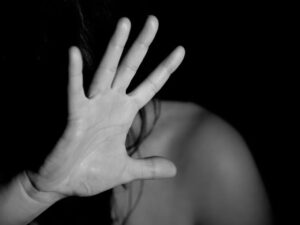[imagesource: Getty]
We all have to wear face masks when venturing out of the house these days.
Much has been written about the efficacy of the DIY variety, with a general consensus that if everyone wears a cloth mask it can limit the spread of the virus.
At the same time, one of the marks of the COVID-19 pandemic is a surge of research into transmission, symptoms, treatments, and prevention, the results of which change as more information becomes available.
According to Sky News, a new study has shed further light on which masks are most effective in the fight against the coronavirus.
Seven types of face masks were put to the test by the University of Edinburgh, including surgical masks, respirators, lightweight and heavy-duty face shields, and handmade masks.
Measurements were taken from people wearing different face coverings from people standing or lying down, as well as from a manikin connected to a cough-simulating machine.
The scientists used specialised imaging equipment to detect the distance and direction of air expelled when someone coughs or breathes heavily.
Although the surgical and handmade masks did limit the forward flow of an outward breath, they also generated “far-reaching leakage jets to the side, behind and above and below” – with “intense backward jets” generated whenever someone was coughing or breathing heavily.

Full-face shields worn without a mask enabled “a strong downward jet” to be released.
This is similar to an experiment conducted at Florida Atlantic University that used imaging technology to measure the distance that a cough travels without a mask to contain it.
You can see the difference in the distribution of exhaled air with and without a mask, here, using the imaging technology and a mannequin:
The masks found to best prevent the escape of fluids containing the virus were those that form a tight shield around the face.
The University of Edinburgh says its findings could help steer official guidance on wearing masks to help tackle COVID-19, which can be spread in small droplets of moisture in people’s breath.

Dr Ignazio Maria Viola, who co-ordinated the project, said he had “generally been impressed by the effectiveness of all the face coverings we tested”.
He went on to say that the least effective of all the face-covering options was a scarf, so avoid those if you can.
If you’re making or buying a cloth mask, Viola has some tips for you:
“Firstly, you need to have multiple layers to make it effective, and second it is important to seal all gaps (hence it should be tightish) otherwise air will be projected at high speed in directions that we are not aware of and that we cannot control. I also guess that it should be washed after every use,” he said.
He also emphasised that a mask does not exempt people from physical distancing, which should be practised at all times.
[source:skynews]





